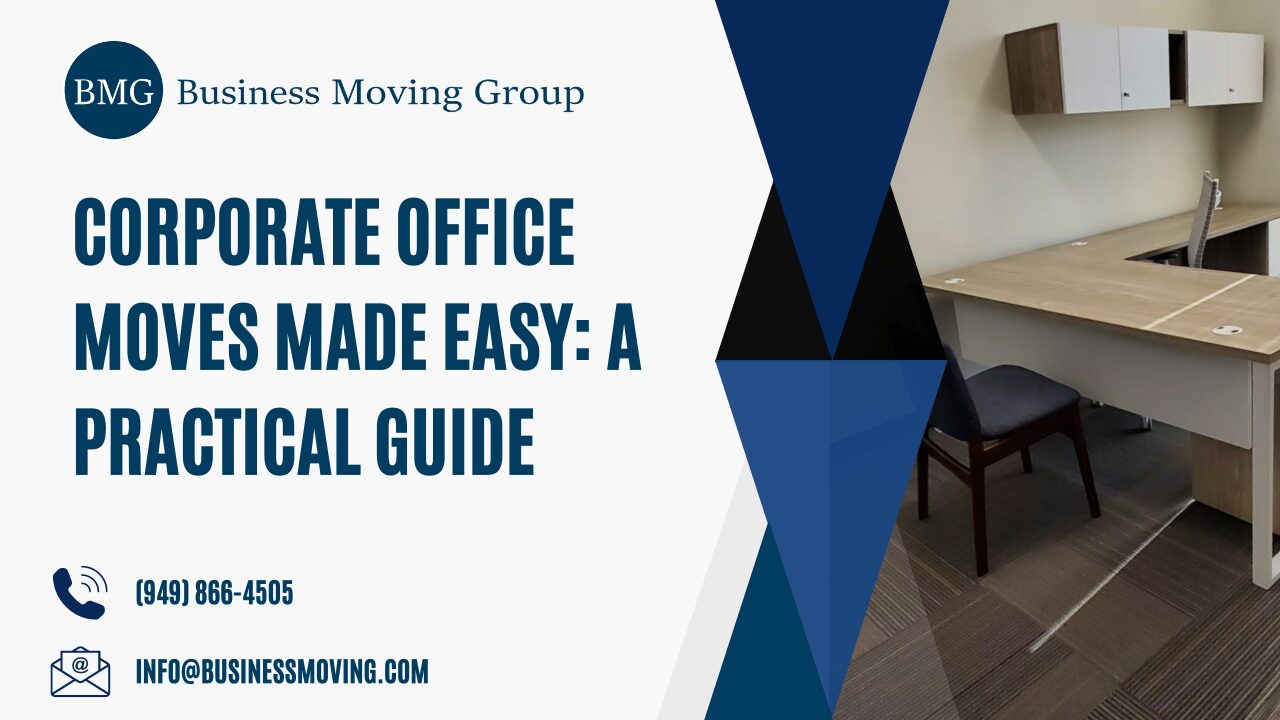Corporate office moves can be complex, but with the right planning and execution, your organization can transition smoothly to a new space without major disruptions. Whether you’re expanding to a larger facility or relocating for strategic growth, this guide outlines essential steps to ensure a successful business office move.
1. Planning for Success
Set a Realistic Timeline
Start your planning process at least 90 days in advance—longer for larger offices. Create a timeline with clear milestones for notifying vendors, coordinating IT disconnections, scheduling movers, and confirming lease terms.
Assemble a Relocation Team
Designate an internal project manager or relocation coordinator to oversee all moving-related tasks. This person should liaise between departments, moving vendors, and building management to ensure nothing falls through the cracks.
Conduct a Site Walk
Visit the new office in advance to take measurements, note elevator and loading dock access, and determine where departments and furniture will be placed.
2. Inventory and Communication
Audit Existing Furniture and Equipment
Document your current assets and decide what will move, what will be donated, and what should be replaced. This helps reduce costs and simplifies the packing process.
Notify Stakeholders
Inform employees, IT teams, service providers, clients, and vendors well ahead of time. Update your company address online, on business cards, and in legal or licensing documents.
Create a Moving Checklist
Use a centralized checklist to track key tasks like data backup, IT packing, packing materials, moving permits, and elevator reservations.
For a sample checklist, visit our office move planning page.
3. Partner with Professional Movers
Hiring a trusted commercial moving company is essential to minimizing downtime and protecting your assets.
Why Hire Business Moving Group?
At Business Moving Group, we specialize in corporate relocations of all sizes. Our services include:
-
Detailed move planning and logistics
-
Disassembly and reassembly of office furniture
-
Secure transportation of sensitive equipment
-
Professional packing and labeling
-
Post-move setup and support
We work nights and weekends to reduce workflow interruptions and ensure your business is fully operational on day one.
4. IT and Equipment Coordination
Protect Your Technology
Work closely with your IT team or third-party providers to schedule safe disconnection, transport, and reconnection of servers, workstations, and network hardware. Proper handling can prevent data loss and downtime.
Label Everything Clearly
Ensure all equipment, boxes, and furniture are labeled by department or employee. Color-coding and numbering can significantly speed up the unloading and setup process.
5. Move Day and Beyond
Move in Phases
If possible, relocate in stages—starting with non-essential departments. This helps reduce chaos and allows teams to stay productive during the transition.
Conduct a Final Walkthrough
Inspect the old space for leftover items and potential damage. Document everything and coordinate with your landlord to close out the lease properly.
Post-Move Support
Once you’re in the new space, allow time for unpacking, adjustment, and feedback from employees. A final touch-up visit from your moving partner can help rearrange furniture or troubleshoot equipment issues.
Final Thoughts
A corporate move doesn’t have to be overwhelming. With strategic planning, clear communication, and a reliable moving partner, you can relocate efficiently and with minimal disruption. Whether you’re moving 10 people or 300, choosing a company like Business Moving Group ensures your next move is handled with precision, care, and expertise.
Ready to Simplify Your Business Move?
Contact Business Moving Group today for a free consultation!
Visit us at Business Moving Group for helpful resources and to learn more about our services.

